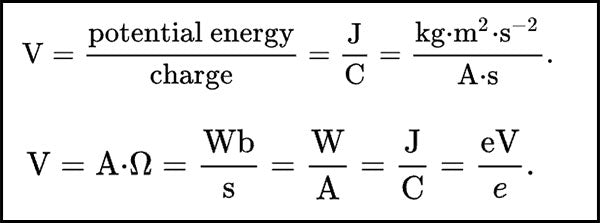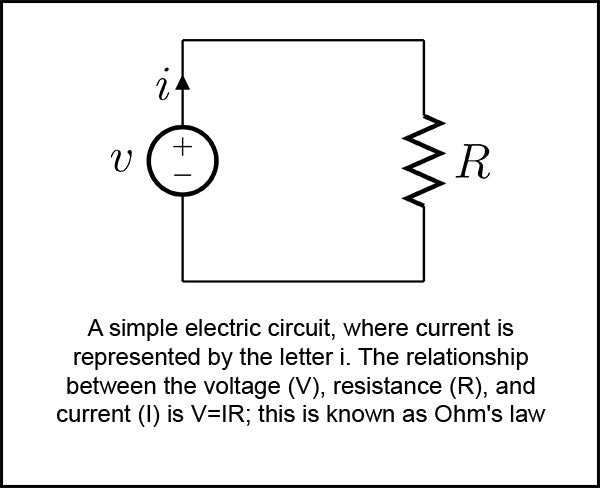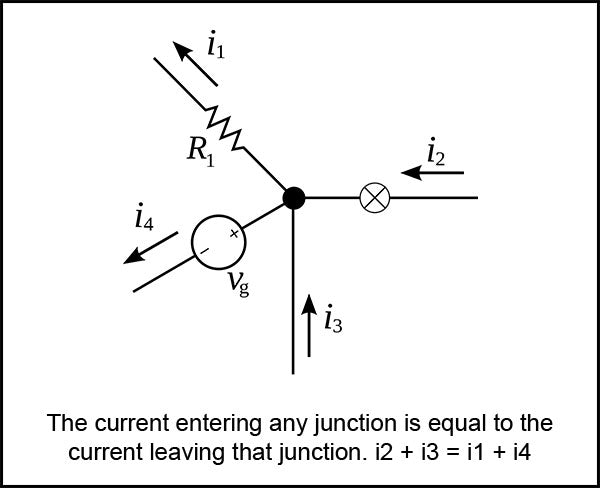Voltage and Current: The Building Blocks of Electrical Circuits

Voltage and current are foundational concepts that form the basis of our understanding of electricity and its role in powering the modern world.
In this comprehensive guide, we will delve into the fascinating realm of voltage and current, unraveling their essence and exploring their significance in electrical circuits.
Voltage: The Driving Force of Electricity
Voltage, also known as electric potential difference, acts as the impetus that propels electrons through circuits. It is measured in volts (V) and represents the energy available for electron movement.

Let's examine the nature of voltage, its connection to electric fields, and its role in creating potential for current flow.
Voltage Sources
Voltage can arise from various sources in electrical circuits. Batteries provide direct current (DC) voltage, whereas generators and power grids supply alternating current (AC) voltage. Additionally, there are other noteworthy contributors to voltage generation.
For example, solar panels convert sunlight into electrical energy through the photovoltaic effect, making them environmentally friendly and sustainable voltage sources.
Fuel cells enable voltage generation through chemical reactions, making them valuable for portable and stationary power applications.
Furthermore, piezoelectric materials generate voltage when subjected to mechanical stress, finding applications in sensors and energy harvesting devices.
Understanding the characteristics and distinctions between DC and AC voltage is crucial for effectively designing and operating electrical systems.
Voltage Drop
As current traverses a circuit, voltage experiences a gradual decrease known as voltage drop. This drop occurs across circuit elements like resistors, capacitors, and inductors.
Voltage drop plays a vital role in electrical analysis, as excessive drop can result in power inefficiencies and impact system performance. By minimizing voltage drop, we can optimize power distribution and ensure efficient circuit operation.
A study and analysis conducted by Omazaki Engineering emphasizes that studying voltage drop is a fundamental and frequently required aspect of electrical analysis.
Various techniques, including Kirchhoff's laws and circuit simulation software, aid in analyzing and mitigating voltage drop in practical applications.
Current: The Flow of Electric Charge
Current, denoted as I, quantifies the rate of electric charge flow in a circuit. Measured in amperes (A), it indicates the amount of charge passing through a specific point per unit time.
This section unveils the dynamics of current flow, explores resistance and conductance, and introduces Ohm's Law as a fundamental relationship linking voltage, current, and resistance.

Types of Current
In addition to comprehending the basics of current flow, exploring different types of current is pivotal.
Direct current (DC) maintains a steady charge flow in one direction and is commonly used in battery-powered devices, electronics, and select industrial processes.
Alternating current (AC), on the other hand, cyclically changes direction. AC is widely employed in power transmission and distribution, offering advantages such as easy voltage conversion and efficient long-distance transmission. It serves as the primary form of electricity supplied to homes and businesses.
Moreover, specific types of currents warrant attention.
Pulsating DC combines characteristics of both AC and DC currents and is encountered in applications involving rectifiers or switching power supplies.
Three-phase AC finds extensive utilization in industrial settings for power transmission and motor control due to its efficiency and torque production benefits.
Electric Current Measurement
Accurately measuring electric current is essential for circuit analysis and troubleshooting. Various methods are employed to measure current, ensuring precise readings and facilitating proper system evaluation.
Ammeters
are specialized instruments designed for measuring current flow in a circuit. They are connected in series and provide direct current magnitude readings.
Current transformers
enable the measurement of high-current levels by converting them into lower currents that can be safely measured using ammeters or other measuring instruments. These transformers find extensive use in power systems and electrical grid monitoring.
Hall effect sensors
rely on the Hall effect, producing a measurable voltage when a magnetic field is applied perpendicular to the direction of current flow. These sensors are non-intrusive and accurately measure both DC and AC currents.
By utilizing appropriate current measurement techniques, engineers and technicians can assess the performance of electrical systems, identify anomalies, and ensure optimal operation.
Voltage and Current: Interplay in Electrical Circuits
Understanding the interconnection between voltage and current is pivotal in comprehending electrical circuits. Their relationship adheres to fundamental laws and principles that aid in circuit analysis, design, and troubleshooting.
Series and Parallel Circuits
Electrical circuits can be classified into series or parallel configurations, each possessing distinct properties.
Series circuits involve components connected sequentially, forming a single path for current flow. The total voltage across the circuit is divided among the components, while the current remains constant throughout the circuit.
Examples include strings of holiday lights and series-connected resistors in electronic circuits.
Parallel circuits, on the other hand, provide multiple independent paths for current flow. The voltage across each component remains constant, while the total current divides among the branches based on their respective resistances. Common instances include household wiring and branches of a computer circuit board.
Understanding the characteristics and behavior of series and parallel circuits is pivotal for circuit design, load balancing, and fault analysis.
Kirchhoff's Laws
Kirchhoff's laws are essential principles for analyzing complex electrical circuits.
Kirchhoff's current law (KCL) states that the sum of currents entering a node equals the sum of currents leaving it. In other words, the total current flowing into a junction in a circuit is equal to the total current flowing out of that junction.
Kirchhoff's voltage law (KVL) asserts that the sum of voltage drops across components in a closed loop equals the applied voltage. This law serves as the foundation for voltage analysis in circuits, helping engineers solve intricate systems of equations to determine unknown voltages.

Image Source: Motty
Practical Applications: Voltage, Current, and Everyday Electronics
This section focuses on the practical applications of voltage and current in real-life scenarios. By understanding how voltage and current impact various devices and systems, we can appreciate their significance in daily life.
Power Supplies
A comprehensive understanding of voltage and current is essential for designing and selecting appropriate power supplies. Whether it involves a wall adapter for charging smartphones or a high-voltage power supply for industrial equipment, matching voltage and current ratings to the load requirements ensures safe and efficient operation.
Furthermore, discussing different power supply topologies, such as linear and switching power supplies, along with their advantages and disadvantages, imparts valuable insights.
Batteries
Voltage and current play integral roles in battery technology, which powers numerous portable devices and vehicles.
Delving into different battery chemistries, such as lithium-ion, lead-acid, and nickel-metal hydride, helps readers grasp their distinct characteristics, applications, and advancements.
Additionally, highlighting the importance of voltage and current management in battery charging and discharging processes provides practical knowledge for optimizing battery life and performance.
Integrated Circuits (ICs)
Voltage and current significantly impact the operation and functionality of integrated circuits (ICs).
These miniature electronic devices, found in nearly all electronic devices we use, require specific voltage and current levels for reliable operation.
Discussing various families of ICs, including microcontrollers, digital logic, and application-specific integrated circuits (ASICs), expands readers' understanding of how voltage and current requirements influence IC design, power consumption, and overall system integration.

Image Source: Cole8888
Safety Considerations
Adhering to safety standards and guidelines is vital when working with voltage and current in electrical systems. Electrical hazards, such as electric shock and fire risks, can be mitigated by implementing proper safety measures.
Key considerations include:
- Adhering to voltage and current ratings specified for electrical components, devices, and systems to prevent equipment failure and hazards.
- Proper grounding and bonding practices to establish low-resistance paths for fault currents and minimize the risk of electric shocks.
- Insulation and protective devices, such as circuit breakers and fuses, to safeguard against electrical faults and overcurrent situations.
- Utilizing appropriate personal protective equipment (PPE), such as insulated gloves, safety goggles, and protective clothing, when working with high voltages or currents.
- Following proper installation practices and conducting regular maintenance checks to ensure electrical safety and identify potential risks.
Voltage and current form the fundamental pillars of electrical engineering and circuit design. Understanding their core principles enables comprehension of complex concepts in electronics.
You are now ready to embark on an exciting journey through the captivating world of electrical circuits while prioritizing safety and efficient utilization of voltage and current in various applications.




